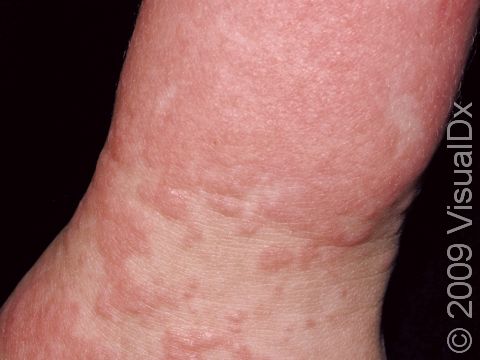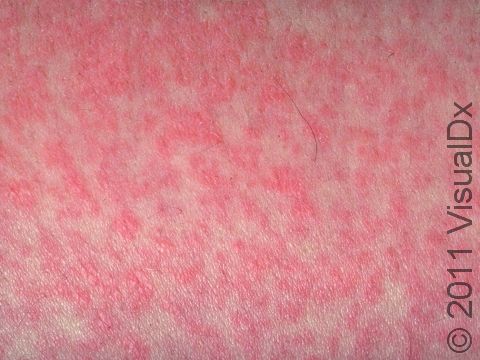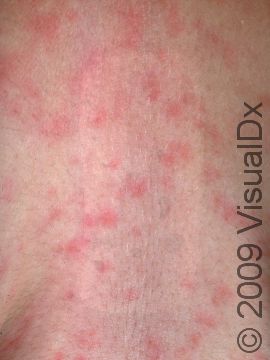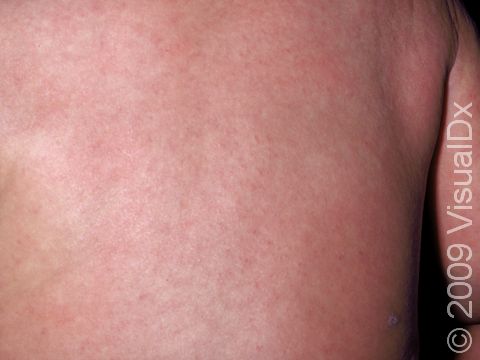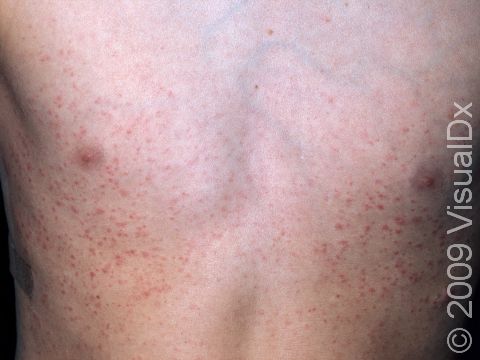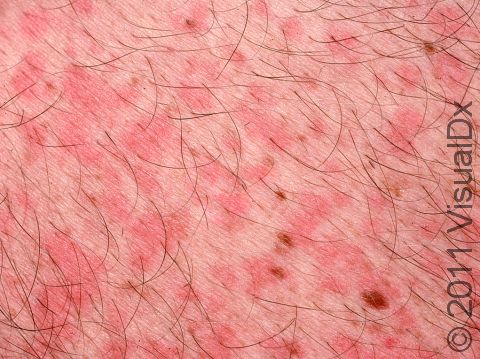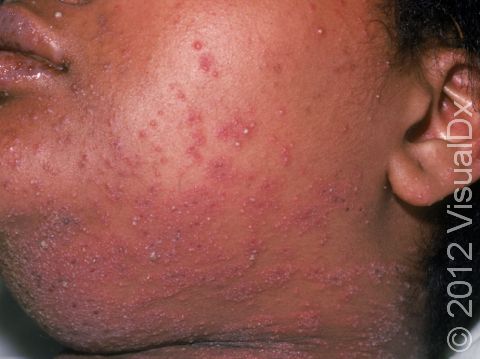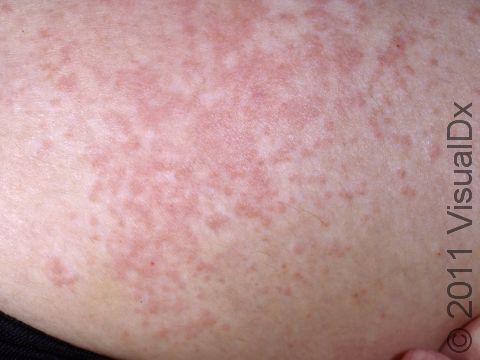Viral Exanthem
Viral exanthem is the name given to a rash that is presumed to be caused by a virus but it is unclear which virus is the cause. These rashes can look very different: some are itchy, some are all over the body (widespread), some are pink, and some are red. The way the rash looks and the affected person’s other symptoms and age are all clues that can help your doctor determine the cause of the rash. Depending on the virus involved, these rashes can be contagious. There is often no available treatment, but for some viral exanthems your doctor may wish to treat the underlying virus, so it is important to show any concerning rash to your doctor. It is always important to practice good hand washing when a virus is suspected.
Who's At Risk?
Anyone of any age can develop a viral exanthem, though they are far more common in babies, young children, and teens who are not yet immune to as many viruses as adults are.
Signs & Symptoms
A widespread rash of pink-to-red spots or bumps occurs primarily on the trunk, arms, and legs. The rash may or may not be itchy. Sometimes, the person does not feel well and might have fever, fatigue, headache, loss of appetite, aches and pains, and irritability.
Self-Care Guidelines
- For mild symptoms, no treatment is required, as the rash and illness often last only a few days and then go away.
- Acetaminophen (Tylenol®) may be helpful for low fever and aches and pains.
- Get lots of bed rest and drink plenty of liquids.
Treatments
Blood tests or procedures to grow out viruses of bacteria (cultures) may be done to look for more serious causes of your rash.
If a serious bacterial or other infection is suspected, antibiotics may be given.
Visit Urgency
See your doctor if you have any of the following:
- Fever with a temperature over 101 degrees that lasts more than a day
- Severe headache, stiff neck, confusion, unconsciousness, or seizures
- Diarrhea and/or vomiting, severe abdominal pain
- Severe cough or sputum with pus or blood
- Spots, swelling, redness on the palms or soles, blisters, swollen and painful joints
- Red eyes, mouth, or tongue
- Rash that is bright red and does not fade (blanch) with finger pressure
References
Bolognia, Jean L., ed. Dermatology, pp.1255-1259. New York: Mosby, 2003.
Freedberg, Irwin M., ed. Fitzpatrick’s Dermatology in General Medicine. 6th ed. pp.2099-2101. New York: McGraw-Hill, 2003.
Last modified on August 16th, 2022 at 2:44 pm

Not sure what to look for?
Try our new Rash and Skin Condition Finder
